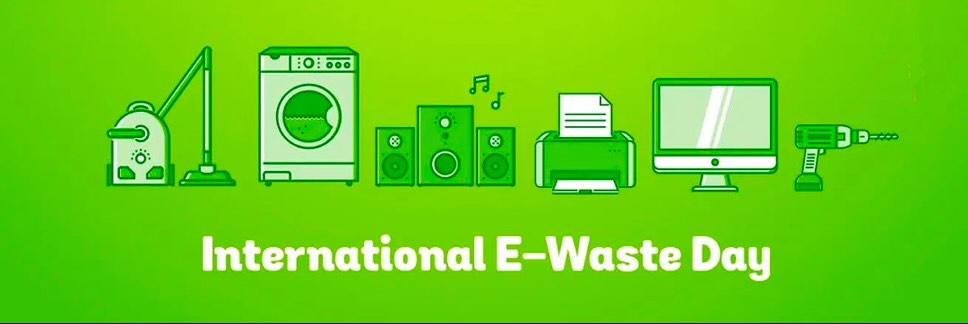
International E-waste Day is a yearly awareness raising celebration initiated by the WEEE Forum and its members. It takes place every year on 14 October, with the goal of highlighting the growing issue of electronic waste (e-waste) and promoting responsible e-waste management.
According to the United Nations, eight kilograms of e-waste per person will be produced worldwide in 2023. This means 61.3 million tonnes of electronic waste discarded within a year — more than the weight of the Great Wall of China. Only 17.4 per cent of this waste, containing a mixture of harmful substances and precious materials, will be recorded as being properly collected, treated, and recycled globally.
The remaining 50.6 million tonnes will be either placed in landfill, burned, or illegally traded and treated in a sub-standard way, or simply hoarded in the households. Even in Europe, which leads the world in e-waste recycling, only 54 per cent of e-waste is officially reported as collected and recycled and the lack of public awareness is preventing countries from developing circular economies for electronic equipment.
International E-Waste Day serves as a platform for raising awareness about the e-waste issue. In 2022, 194 organizations from 72 countries across six different continents registered as #ewasteday participants, with many more entities marking the day with activities, news reports, and online campaigns.
Associated Learning Resources
Recycle your e-waste – it’s critical!
On International E-waste Day 2025, we feature this project video, developed by the International Telecommunication Union's (ITU) Telecommunication Development Bureau and the Kingdom of Saudi Arabia's Communications, Space & Technology Commission under the project Developing and implementing e-waste policy and regulation for a circular economy in Paraguay, Rwanda, and Zambia. Watch and learn about the impact of this ITU-Saudi Arabia collaboration towards digital sustainability and circularity of electronics through a regulatory approach to e-waste management.
Global and complementary actions for electronics extended producer responsibility (EPR)
As part of a collaboration for International E-waste Day 2022 ITU, the WEEE Forum and StEP have prepared a thought paper presenting complementary solutions and concepts to propel e-waste collection rates in line with EPR-based regulation, whilst also delving into the perceived need for an international regime around EPR to assist with harmonization efforts. New and complementary solutions and concepts are urgently needed to turn the tide on the side of e-waste collection and to move towards a circular economy. Complementary actions can be wide in scope, from commercially or not-for-profit driven to solution-based actions, including deposit-return or refund schemes, public-private-partnerships, as well as the all-actors-approach and the best-of-two worlds philosophy. Complementary actions can operate across national borders, but these would benefit greatly from an international regime, with the objective of overseeing a global approach to tackling e-waste and of ensuring the harmonization of national EPR approaches.
Digital solutions for a circular electronics value chain
This thought paper explores the applicability and scope of digital technologies for enabling circularity in the lifecycle of electronic devices and was released on International E-waste Day 2021. The current linear economy model is highly unsustainable and vulnerable to economic shocks from the disruption of resources, as seen in the COVID-19 pandemic. A systemic transformation towards a circular electronics value chain is vital for stability and sustainability. Digital technologies can support transparency, efficiency, ease, and accountability in existing economic systems to shift towards circularity. The paper maps out major digitalization trends and highlights use cases of digital technologies across the electronics value chain, ranging from simple digital platforms and online materials marketplaces to AI-enabled e-waste recognition. Such examples are drawn from both established and emerging digital solutions, while case studies provide a deeper look into real-world applications of digital technologies across the electronics value chain.
Internet waste
For International E-waste Day 2020, the ITU and the WEEE Forum collaborated again in the preparation of a thought paper on internet waste as public knowledge about waste derived from connectivity infrastructure is limited. The full impact and regulation of materials and components critical to the digital economy is difficult to assess as the infrastructure and end-of-life management are less visible. This is true especially to individual consumers that use personal ICT devices supported by data centres and telecommunication networks. The thought paper focuses on Waste Electrical and Electronic Equipment (WEEE) derived from wireless infrastructure for mobile Internet connectivity, connected devices and data storage with examples from mobile networks, IoT and data centres. The aim of this paper is to raise awareness about waste from infrastructure that supports connectivity and the need for sustainable WEEE management practices within data centre and telecommunications industries considering forecasted growth.